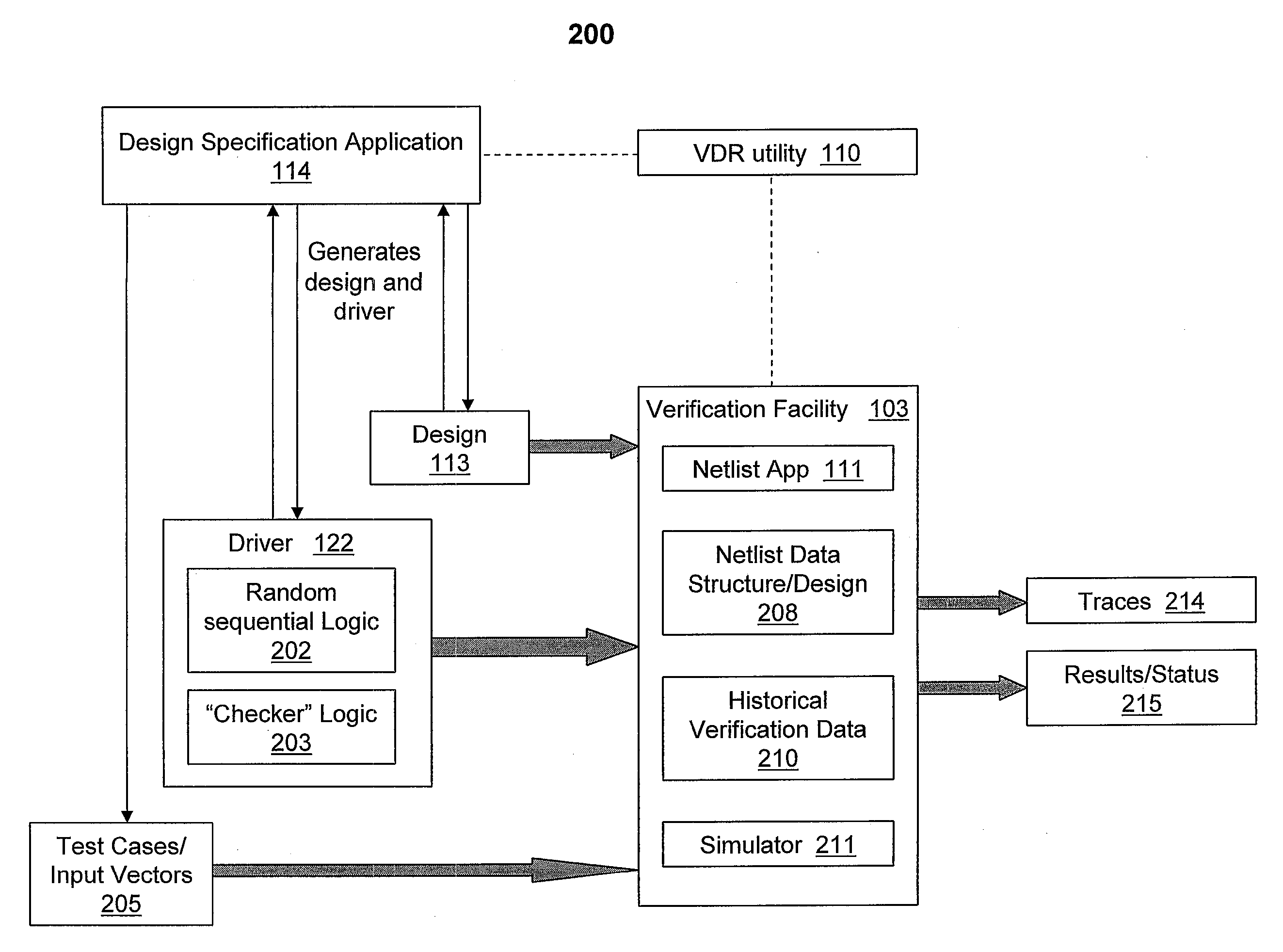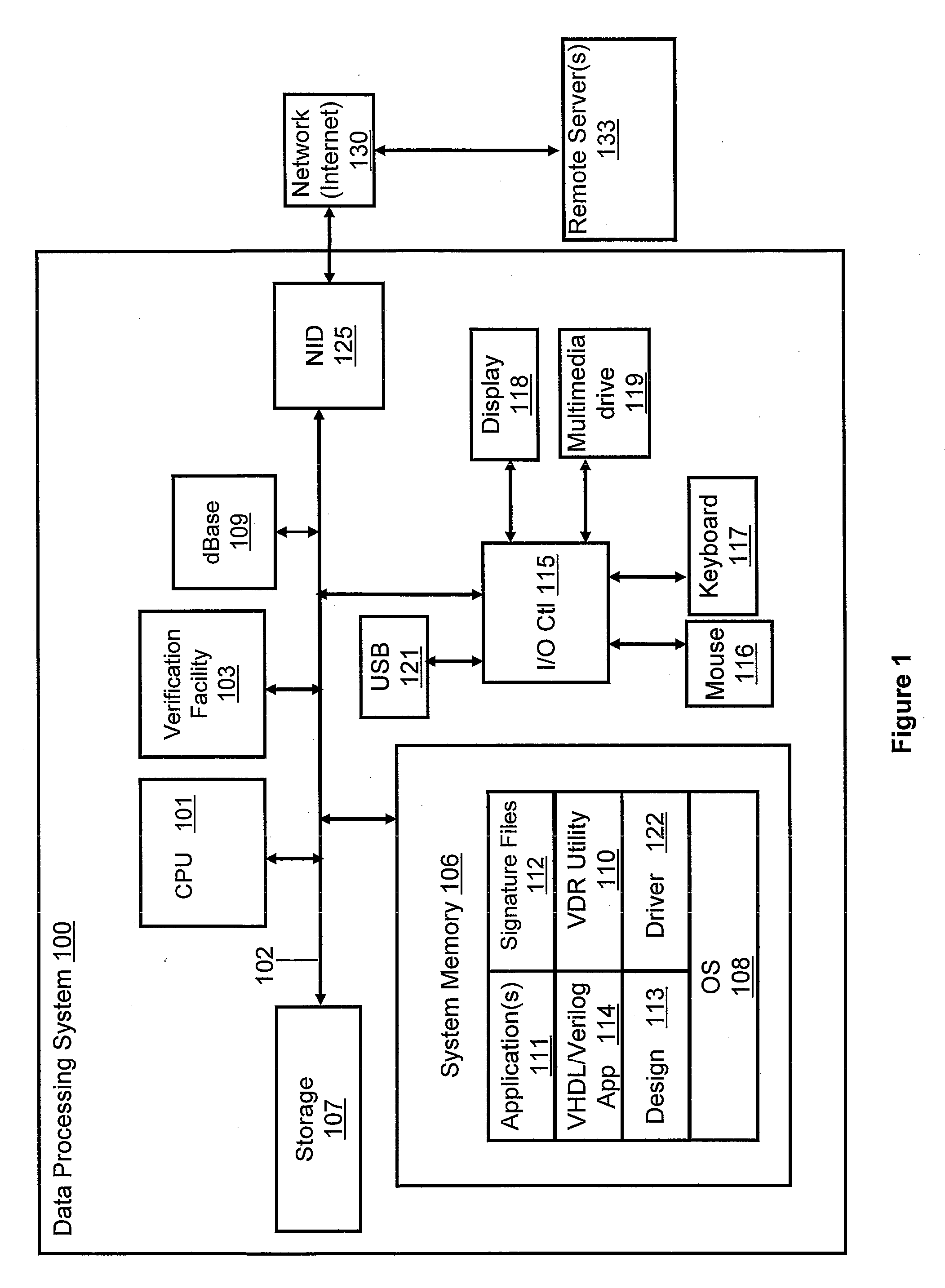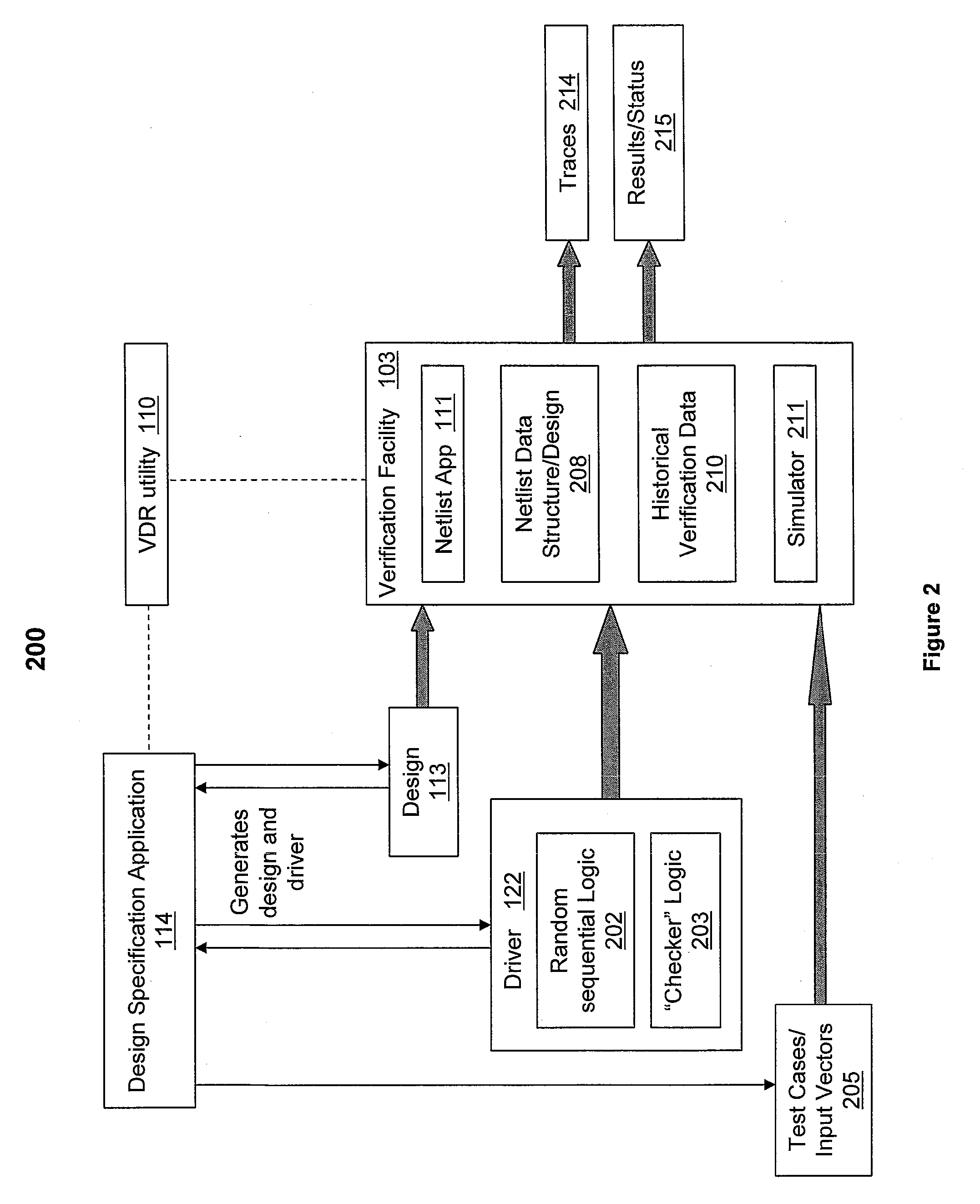Enhancing Formal Design Verification By Reusing Previous Results
a formal design and verification technology, applied in the field of electric circuit design verification systems, can solve the problems of extremely rigorous functional verification practices, large design size of verification process, and large size of verification process
- Summary
- Abstract
- Description
- Claims
- Application Information
AI Technical Summary
Benefits of technology
Problems solved by technology
Method used
Image
Examples
Embodiment Construction
[0006]Disclosed are a method, a system and a computer program product for re-using verification results associated with a circuit design to eliminate a formal verification re-run associated with a subsequent verification of the circuit design. A Verification Data Re-use (VDR) utility initiates the creation of a first netlist (i.e., an electronic design connectivity description) data structure and a first set of target signatures for the circuit design. The VDR utility initiates an initial functional verification run of the circuit design and stores the results of the verification run. When a subsequent verification of the initial design is initiated, the VDR utility compares the first set of target signatures with a second set of target signatures for the subsequent verification run. A match of target signatures indicates that corresponding design targets have an identical functionality and the VDR utility re-uses verification results from the initial verification run to eliminate a...
PUM
 Login to View More
Login to View More Abstract
Description
Claims
Application Information
 Login to View More
Login to View More - R&D
- Intellectual Property
- Life Sciences
- Materials
- Tech Scout
- Unparalleled Data Quality
- Higher Quality Content
- 60% Fewer Hallucinations
Browse by: Latest US Patents, China's latest patents, Technical Efficacy Thesaurus, Application Domain, Technology Topic, Popular Technical Reports.
© 2025 PatSnap. All rights reserved.Legal|Privacy policy|Modern Slavery Act Transparency Statement|Sitemap|About US| Contact US: help@patsnap.com



